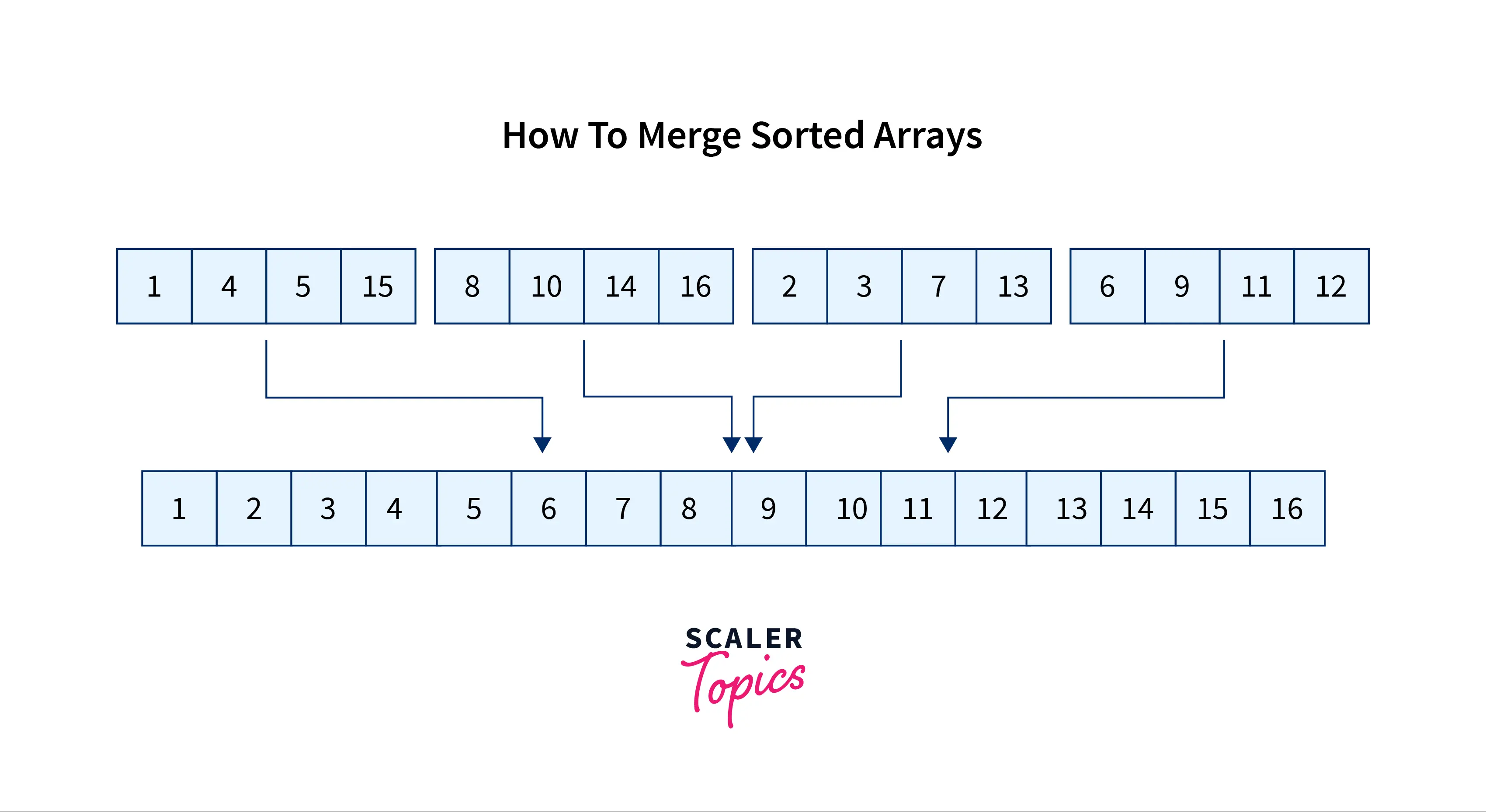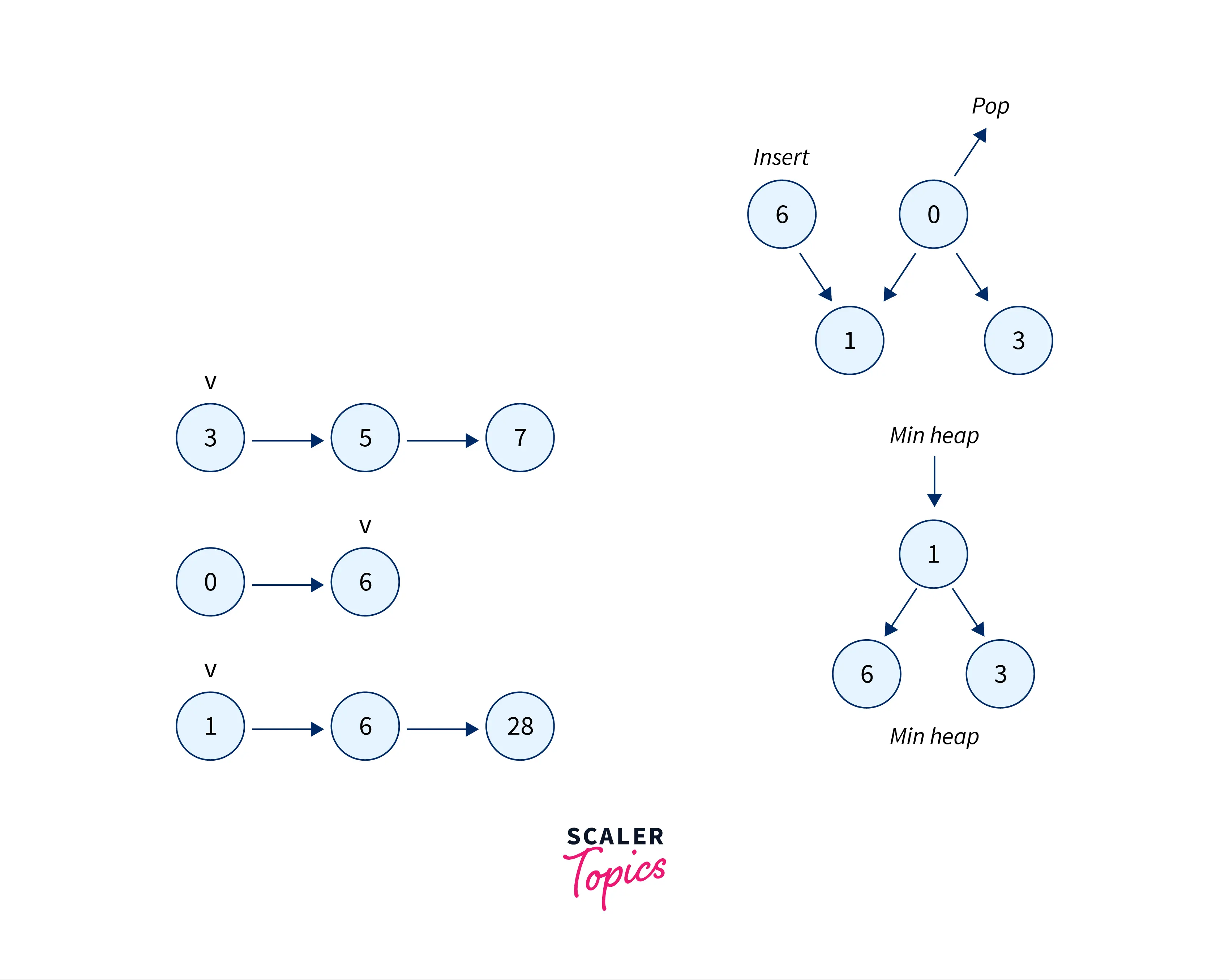Merge K Sorted Arrays

Problem Statement
k number of arrays are given, the task is to merge all the given integer arrays in such a manner that the resultant array is sorted in the runtime only.
Note: arrays are of equal size.
Example:

Output:
Explanation
The array at the output is sorted by combining elements of all the three arrays of input.
Constraints
The Sum of the size of all the arrays will be less than
Approach 1 (Naive Approach)
In the naive approach, create an array of size and copy elements of the array in another array which is an output array and sort the final output array.
The algorithm of the naive approach is:
- Create an array for output of size
- Traverse the matrix given from start to end and copy or insert all the elements in an output array.
- Sort the output array and print it.
Code Implementation(in C++, java , python)
C++ program to merge k sorted arrays
Java program to merge k sorted arrays
python program for merging the array
Output
Time Complexity O(k*n*log(k*n)) Because the resulting array is of N*k size.
Space Complexity O(k*n), The output array is of size nk.
Approach 2 (Efficient Approach )
Algorithm
- Create a function that is recursive, takes the k array, and returns the output array.
- If the value of k in the recursive function is 1 then return the array else if the value of k is 2 then, merge the array in linear time.
- If the value of k > 2, then divide the group of k elements in an array in two equal parts and call the function recursively. This means 0 to k/2 in the first recursive function and k/2 to k in the other recursive function.
- Print the output array
Example:

Code Implementation(in C++, java , python)
C++ program to merge k sorted arrays of size n each
Java program to merge k sorted arrays of size n each.
Python program to merge k sorted arraysof size n each.
Output
Time Complexity
Because there are log(k) levels at each recursive level which are divided into two halves at each k level.
Space Complexity
Each level requires O(n * k) space for storing elements in an array.
Approach 3 (Using min-heap)
Algorithm
- Create a min-heap and insert into it all the first elements of all the k number of arrays.
- Iterate through the loop until the length becomes 0
- Remove the element from the top of the min-heap and add it to output array
- Insert the next element in the same array until there are no more elements left.
Example:

Code Implementation(in C++, java , python)
Java program to merge k sorted array
Python program to merge k sorted array
Output
Time Complexity
because insertion and deletion of element in min heap requires log k time.
Space Complexity
space required by min-heap.
Merge k Sorted Arrays | Set 2 (Different Sized Arrays)
Approach
We would use a min-heap that would return the smallest element in constant time O(1) instead of searching through all k elements.
Example:
Input:
Output:
Algorithm
- Create an array for storing the output
- Create a min heap of k size and insert the first element of heap in all the array
- Till the priority queue is not empty,, repeat the below steps:
- Remove min element from the heap and store it in the output array
- Insert the next element of array and do it until the array is empty
Code Implementation(in C++, java , python)
C++ program to merge k sorted arrays of n size
Java program to merge k sorted arrays of n size
Python program to merge k sorted arrays of n size
Output
Time Complexity
O(N Log k) because it is heap-based.
Space Complexity
O(N) because of output array.
Conclusion
- Approach 1 (Naive Approach)- create an array of size k*n and copy elements of the array in another array which is an output array and sort the output array.
- Time Complexity :O(k*n*log(k*n))
- Space Complexity: O(k*n)
- Approach 2 (Efficient Approach )- Create a function that is recursive, takes the k array, and returns the output array.
- Time Complexity- O( n * k * log k)
- Space Complexity- O( n * k * log k)
- Approach 3 (Using min-heap)- Create a min-heap and insert into it all the first elements of all the k number of arrays. Iterate and remove the element from the top of the min-heap.
- Time Complexity- O( n * k * log k)
- Space Complexity- O(k)
- Merge k sorted arrays | Set 2 (Different Sized Arrays)- The approach for this is to use heap data structure along with the priority queue.
- Time Complexity- O(N Log k)
- Space Complexity- O(N)
